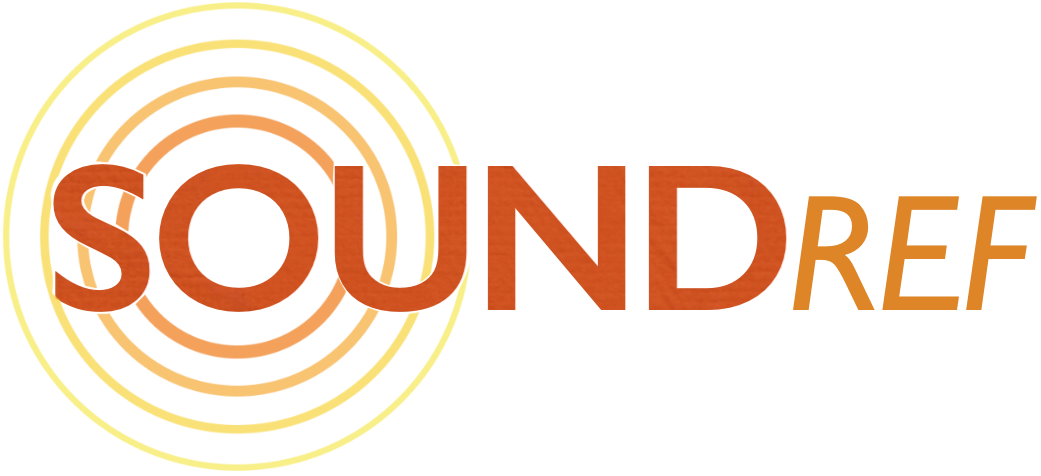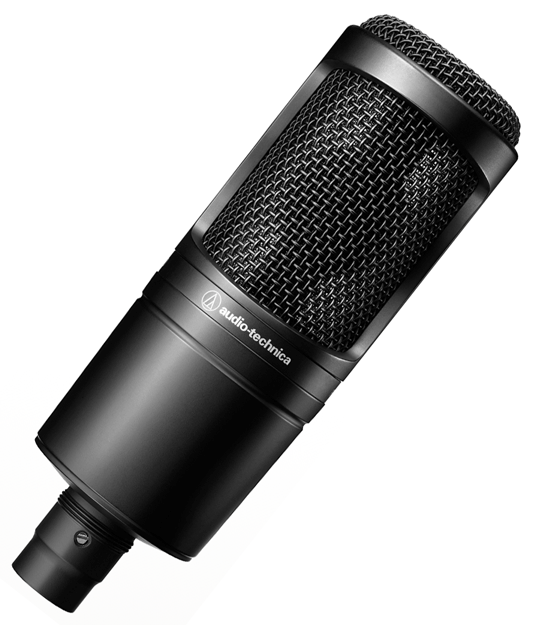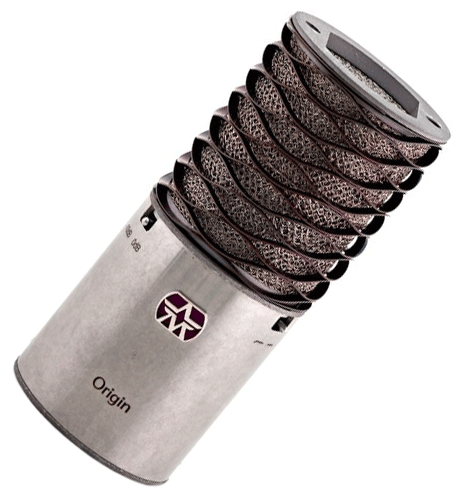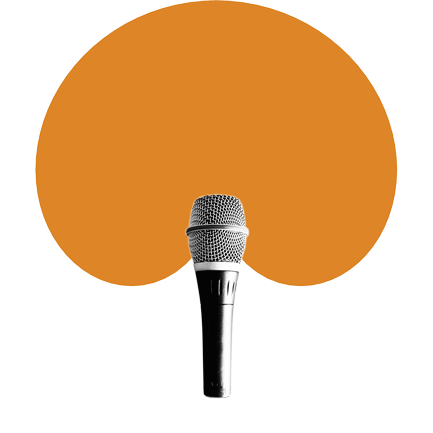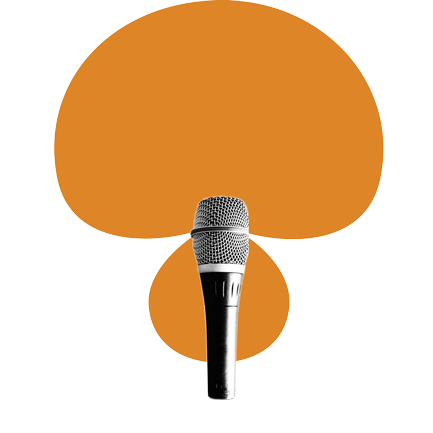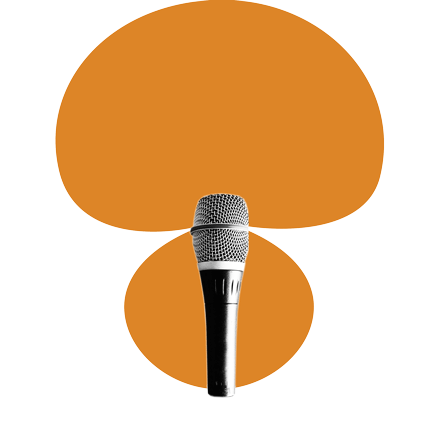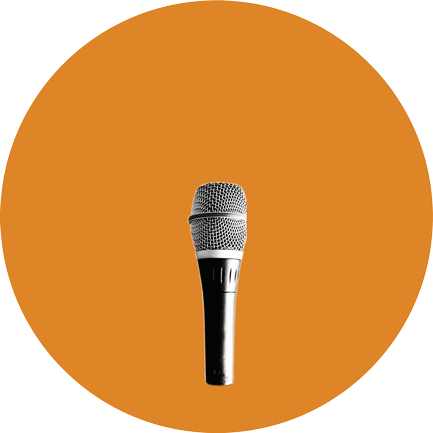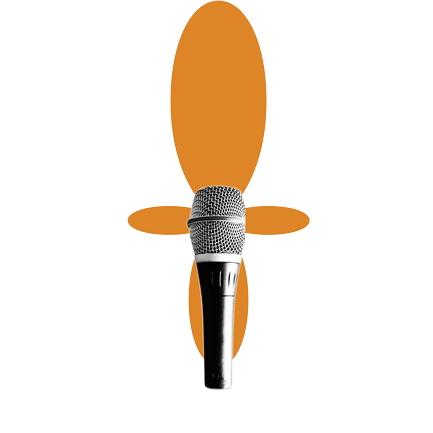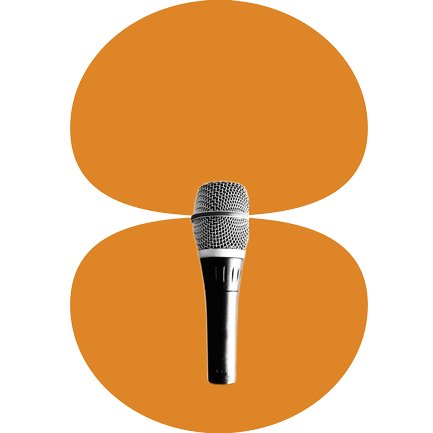The World’s Best Mic for Recording Vocals
If you want your vocals to stand out from the crowd, you’ll need the microphone best suited to your unique voice
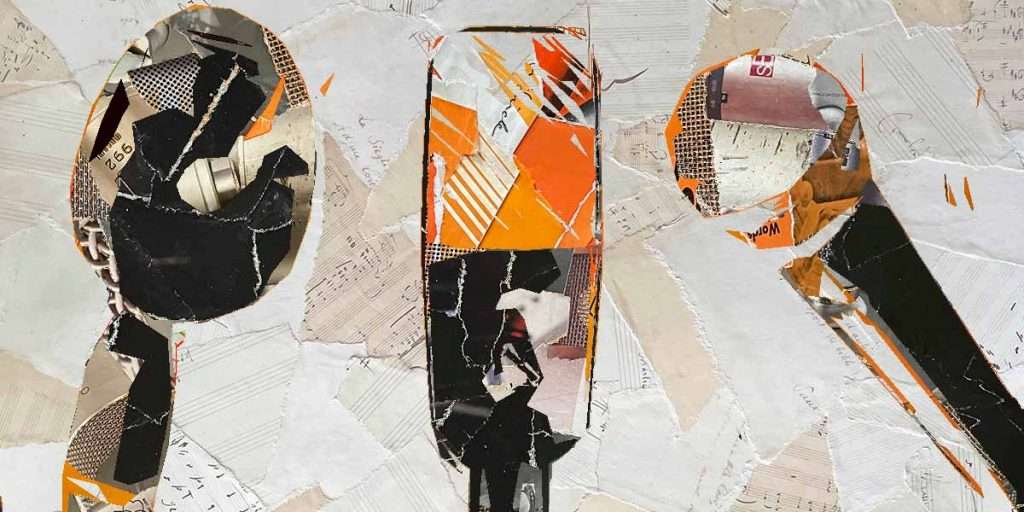
Author: Paul Narang
Last updated: January 2024
Whether it’s Abbey Road or a bedroom studio, the bedrock of any recording setup is great microphones. If you want to get the best possible sound when capturing your vocals, there’s a few factors to consider:
- Frequency Range
- Sensitivity and Polar Pattern
- Detail and clarity
- Sound or “colouration”
- Budget
What do you need in a vocal mic?
Before you invest in a vocal mic for your recording studio, ask yourself:
- How quiet is your studio environment? Is it well soundproofed?
- Will you also be recording instruments with the same mic?
- If so, which instruments – drums or acoustic guitar?
- Will you need a vocal mic suited to all voice types?
- Or do you need one that suits just your specific voice?
There’s a few mics which are great all-rounders, but no microphone is perfect for all situations. A condenser mic which sounds great on vocals might also capture the acoustic guitar really well, but it is unlikely to be right for a kick-drum.
Whatever your requirements in the recording studio, this roundup of vocal mics for recording will tell you all you need to know.
Best mic for recording vocals:
Rode NT1
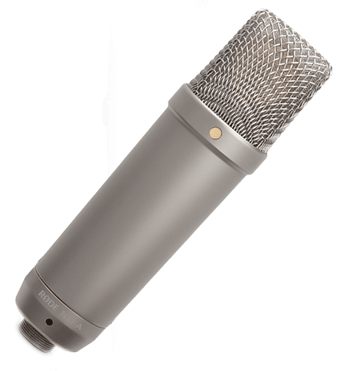
This bestselling studio condenser has a clean, detailed and bright sound with both XLR and USB connections.
Not only is it great on vocals, it also sounds fantastic with acoustic guitars. At this price the Rode NT1 is a valuable addition to any home studio.
Special mention recording vocal mic:
Shure SM7B
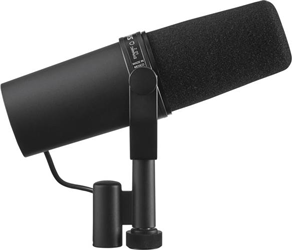
The Shure SM7B has a combination of rich, clear sound, and super durable build quality.
An industry standard dynamic mic, the SM7B also has superior noise-rejection to many studio condenser vocal mics.
Top picks for the best live studio microphones
In this round up:
- Rode NT1 – Overall best vocal mic for recording vocals
- Shure SM7B – Special mention recording vocal mic
- AKG C414 XLII – Premium choice for recording vocals
- AKG C214 – Best budget premium vocal mic
- Audio Technica AT2020 – Best budget mic for recording vocals
- Aston Microphones Origin – Most stylish mic for recording vocals
- Shure SM58 – Best vocal mic for recording and stage use
1. Rode NT1

Premium sound at an affordable price

At a glance:
| Mic type | Condenser mic for recording vocals |
| Frequency range | 20Hz to 20kHz |
| Polar pattern | Cardioid |
The pros:
Low self-noise
Open and detailed high end
High quality, yet affordable
The cons:
No -db pad
What is it?
The Rode NT1 is a best-selling condenser mic for the home studio market. This 5th generation NT1 delivers a bright, detailed and authentic vocals which and also sounds great on acoustic guitar.
Features
The Rode NT1 is a large diaphragm studio condenser microphone. It has a 1-inch gold-sputtered capsule and an internal shock-mount which stops any stand or handling noise.
The NT1 has the heart-shaped cardioid pickup pattern. It picks up sound from the front, but rejects sound from the back and sides, which makes it well suited to close-miking both vocals and instruments.
One thing that stands out about the Rode NT1 is it’s high level of sensitivity – it picks up sound easily without having to add lots of extra gain. This makes for clean vocal recordings with a low noise floor. According to Rode, the NT1 is one of the world’s quietest studio microphones, with a low self-noise of just 5dBA.
The NT1 will pick up the smallest details and nuances in your vocals, delivering full sounding and expressive recordings. The latest 5th generation has a USB socket for your computer, as well as an XLR socket to connect to an audio interface. On top of that, it has an internal DSP controlled compressor, equaliser and noise gate.
Rode NT1 Frequency response
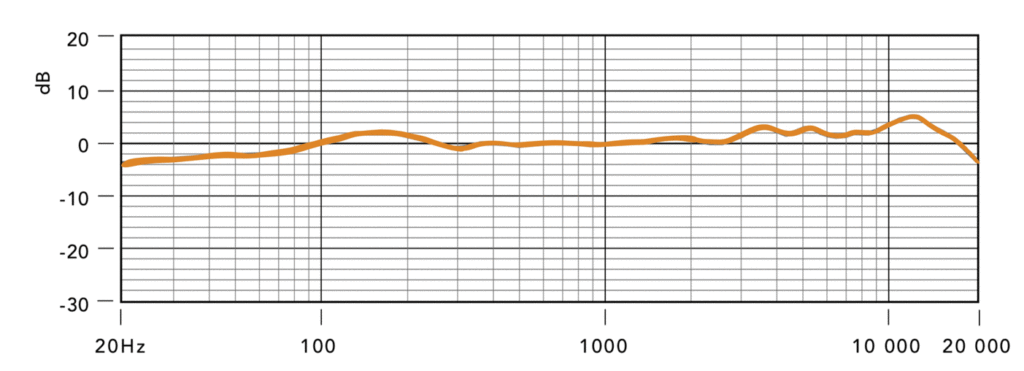
The Rode NT1 has an extremely wide frequency range. Stretching from 20Hz up to 20kHz, it covers the whole range of human hearing.
Beginning at the low end, there’s a very slight upwards curve from 20-100Hz, followed by a small low-range boost from 100-200Hz. This provides some valuable depth and weight to lower voices.
Above 200 Hz, the Rode NT1 reproduces a very flat midrange, before a series of small peaks upwards of 3kHz. The largest peak in the chart is at around 10kHz.
These peaks have the effect of boosting the ‘presence’ – extra air and sparkle in the top-end, which can really lift your vocals.
The frequency chart of the NT1 has a slightly flatter response than its sibling, the Rode NT1-A, which is a little coloured in the high end. This mic works perfectly for a wide range of vocals.
Verdict
The Rode NT1 is a bestseller for a reason. It’s affordable and well designed, offering clean and detailed recordings. The brightness and clarity and details is perfect for recording vocals, as well as acoustic guitar.
At this price, the Rode NT1 is the top choice for anyone requiring a premium vocal sound in their home recording studio.
Read the Rodes NT1-A review here
2. Shure SM7B

A reliable dynamic mic built for the studio. Perfect for vocals, spoken word and more…

At a glance:
| Type of mic | Dynamic vocal studio mic |
| Frequency range | 50Hz – 20kHz |
| Polar pattern | Cardioid |
The pros:
Natural, accurate sound
Reduces room noise
Very high SPL
The cons:
Expensive
Lower output than some vocal mics
What is it?
The Shure SM7B is a classic dynamic vocal microphone with a rich and clear sound. The SM7B is a high quality, versatile mic, well suited to recording studios, radio studios and podcasting studios.
Features
A bit bigger than its live counterparts, the Shure SM7B comes with a specialist mounting, and features internal “air suspension” shock isolation. This does a great job of removing stand noise and eliminates the need for an external shock mount.
The SM7B has a heart shaped cardioid polar pattern which is well suited to the recording studio. It’s forgiving enough of singers moving around the mic a little, whilst still offering superb side and rear noise-rejection.
As a dynamic mic, a great feature of the Shure SM7B is it’s lower sensitivity, and it’s rejection of noise beyond about 1 foot (on-axis). This means that any singing close to the mic will be picked up very clearly, with most of the room noise being rejected.
This is perfect for a home recording studio which hasn’t been acoustically treated, or has noise problems from neighbours, traffic, or other equipment.
The flip-side is that the microphone has quite a low output. I suggest running it through a mic activator (such as a Fethead or Cloudlifter) to add some gain should you need it.
The Shure SM7B also has an incredibly high SPL of 180db. This makes it super versatile in the studio – great for the loudest rock singers and other loud instruments, such as horns and drums.
Shure SM7B Frequency response
Impressively for a dynamic microphone, the Shure SM7B has a wide frequency range of 50Hz – 20kHz. The microphone features two switches:
- low cut filter
- presence boost in the high mids
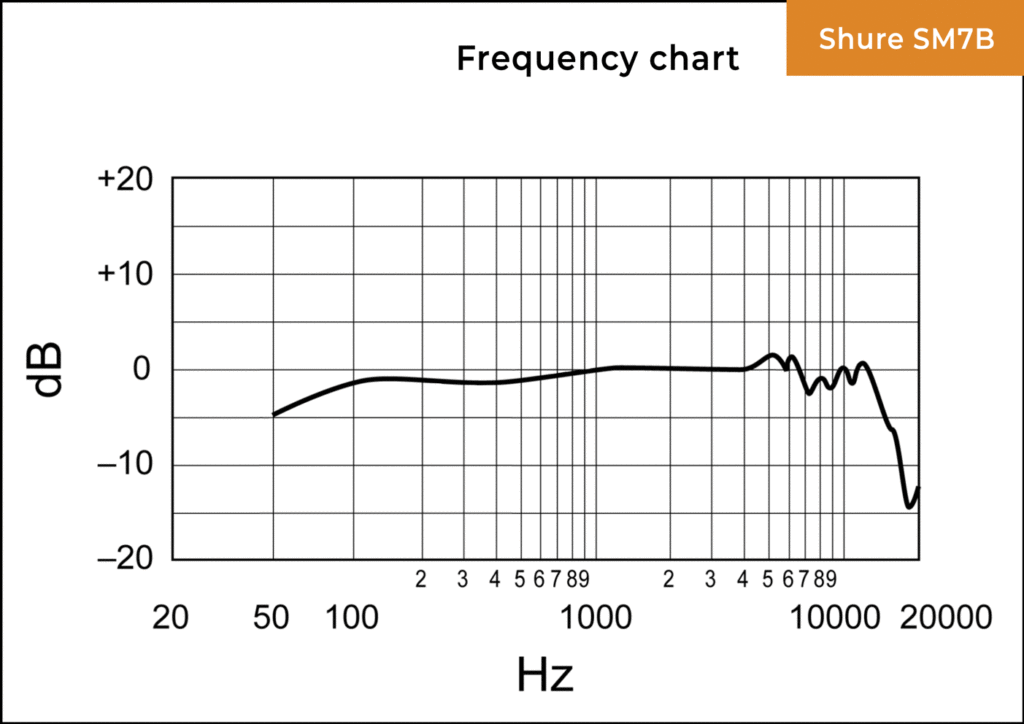
In its neutral position, the microphone has a very flat response, with a gentle roll-off below 100hz, and a series of small boosts between about 5 and 10kHz, which adds a little bit of top-end sparkle to an otherwise very neutral sound.
The lowcut filter activates a steeper roll-off south of around 400hz. This can be very useful for reducing the proximity effect, particularly if you don’t want that rich low-end associated with broadcast mics.
The presence boost adds around 3db of gain between 1 and 10kHz. This will add air and sparkle to your vocals, and help with speech intelligibility.
It’s great to be able to tweak the frequency response of the Shure SM7B, depending on what the situation requires. But even at its neutral setting, this microphone has a wonderfully natural, clear and authentic sound.
Verdict
The Shure SM7B is a gorgeous vocal mic, with a long history in radio and broadcasting. The chances are you’ve already seen one in a podcast recording, or a live radio stream.
The SM7B is well suited to both spoken word and recording vocals. You can hear it in its full glory on the Michael Jackson album, Thriller, where it was used to record all of Michael’s vocals.
Whilst it’s a little on the expensive side, the Shure SM7B is a reliable and versatile vocal microphone with great noise rejection. It has a high quality, rich and clear sound that will make your vocals stand out from the crowd.
Read the full Shure SM7B review here
3. AKG C414 XLII

A top-level industry standard microphone with a modern twist
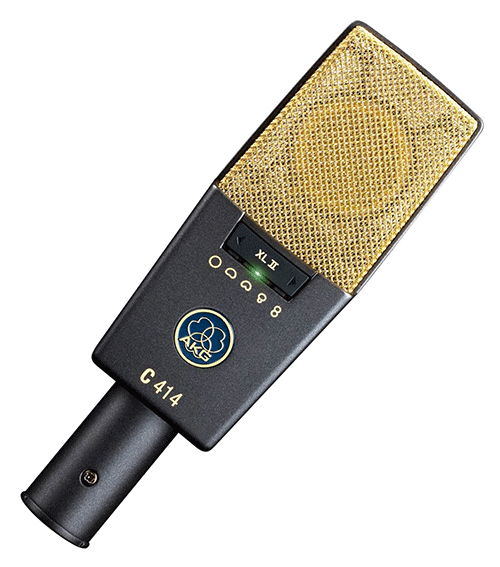
At a glance:
| Type of mic | Large diaphragm condenser vocal mic |
| Frequency range | 20Hz-20kHz |
| Polar pattern | 9 polar patterns, including: Omnidirectional Wide Cardioid Cardioid Hypercardioid Figure of Eight |
The pros:
Premium sound
Extremely versatile
A range of features
The cons:
Very pricey
What is it?
The AKG C414 XLII is a high-end studio condenser microphone with a premium sound and switchable solar patterns. An update on an industry standard, the C414 has a series of customisable features and sounds stunning on vocals.
The AKG C414 XLII is a must for any pro-level studio.
Features
The original AKG C414 series microphones have long been a staple of recording studios around the world.
The XLII version gives the C414 a modern twist, still delivering crystal clear sound, but with greatly expanded features. The C414 XLII features an instantly recognisable classic design, and ships with its own shock mount, pop filter, windscreen and metal carrying case.
Most vocal microphones have a single fixed polar pattern, normally cardioid or hypercardioid. However the AKG C414 XLII allows you to switch between a whopping 9 unique polar patterns.
It offers Omnidirectional, Wide Cardioid, Cardioid, Hypercardioid and Figure of Eight, as well as settings in between these patterns. This capability offers an unrivalled versatility in the recording studio. Not just for capturing that perfect vocal sound, but for recording a whole array of instruments. The patterns are selectable via a button on the front with a small LED display.
The C414 XLII also offers two other switchable features:
- 3 low cut filters at 40Hz, 80Hz and 160Hz
- 3 pre-attenuation pads of -6db, -12db and -18db
The C414 XLii boasts a max SPL of 158db with the -18db pad engaged, meaning there isn’t much you can throw at it that it won’t cope with.
Despite its many features, the AKG C414 Xlii still delivers an uncompromisingly clear and detailed sound, perfect for male and females vocals, guitars and many other instruments.
AKG C414 XLII Frequency range
The frequency chart of the AKG C414 XLII varies slightly depending on the polar pattern you’re using. One thing all charts have in common is an extremely flat response below 1kHz.
Engaging one of the low-cut filters rolls this off in the way that you’d expect, so the XLII can be tweaked to best deal with the proximity effect.
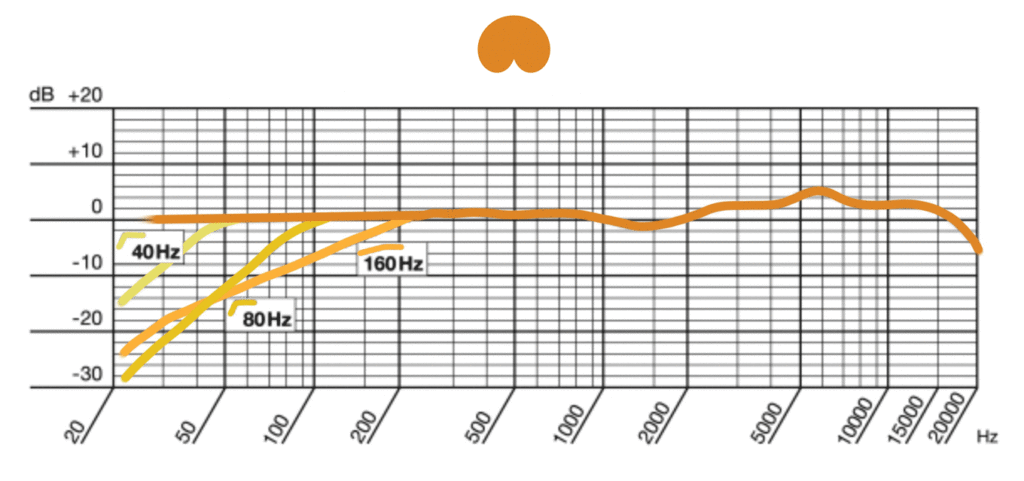
After a little dip around 1.5kHz, the response climbs a few db for a presence boost around 5 – 6kHz. Each polar pattern is slightly different, with the most pronounced colouration in figure of 8 mode, and the least in omnidirectional mode.
The extremely flat lower range provides a smooth bass and detailed mid range. While the contours in the upper range ensure a clarity and sparkle on vocals. Without being too bright or coloured, the AKG C414 XLII microphone has an extremely rich and detailed sound which sounds incredible on vocals, as well as other instruments.
Verdict
With so many bells and whistles, you might be wondering whether the AKG C414 XLII is a bit of a gimmick?
Absolutely not – in addition to all of its many features, the C414 XLII is one of the best sounding vocal and instrument microphones on the market. I consider the high price entirely justified, and recommend the C414 as a premium condenser microphone.
Read the full AKG C414 XKLII here
4. AKG C214

A great vocal mic and all-rounder for the recording studio
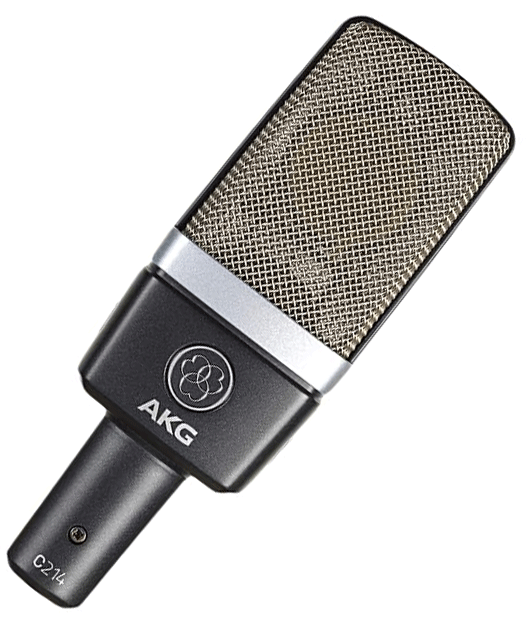
At a glance:
| Type of mic | Large diaphragm condenser microphone |
| Frequency range | 20Hz to 20kHz |
| Polar pattern | Cardioid |
The pros:
Bright and clear sound
-20db Pad
The cons:
A little too bright for some
Sensitive to plosives
What is it?
The AKG C214 is a premium-sounding midrange studio mic with a cardioid pickup pattern. It delivers a bright and clear vocal sound, and is also a great choice for drum overheads, guitars and horns.
Features
AKG designed the C214 as a low-cost alternative to the famous (but pricey) C414. It’s also a large diaphragm condenser mic, and features the same unique design as the C414. It also ships with a handy bespoke shock-mount.
Inside the microphone is an integrated suspension mount which cuts out rumble and hum, and a low self-noise of just 13db makes for clean and quiet recordings.
The cardioid polar pattern is well suited to recording vocals – it’s not so wide that it picks up lots of room noise, but not so directional that it interferes with the natural sound.
One great feature of the AKG C214 is the pre-attenuation pad. This switch introduces a -20db gain reduction at the recording stage. This increases the max SPL from a respectable 136 db to an impressive 156db, which is louder than fireworks or gunfire!
The advantage of this is that once you’ve recorded you’re vocals, you can out the C214 to a variety of uses around the studio. Without the pad engaged the AKG C214 is well suited to vocals, acoustic guitars, piano and more. And with the pad it easily tackles drums, horns and loud guitar amps.
AKG C214 Frequency range
The AKG 214 has a wide frequency range of 20Hz to 20kHz, which covers the entire range of human hearing. In the low range there’s a very gentle roll-off below 60Hz before a flat response up to 700Hz.
The 214 also has a high-pass filter switch which engages a gentle low end roll-off below 160Hz. This effectively counteracts the proximity effect and can be useful for boomy voices or instruments with a pronounced bass
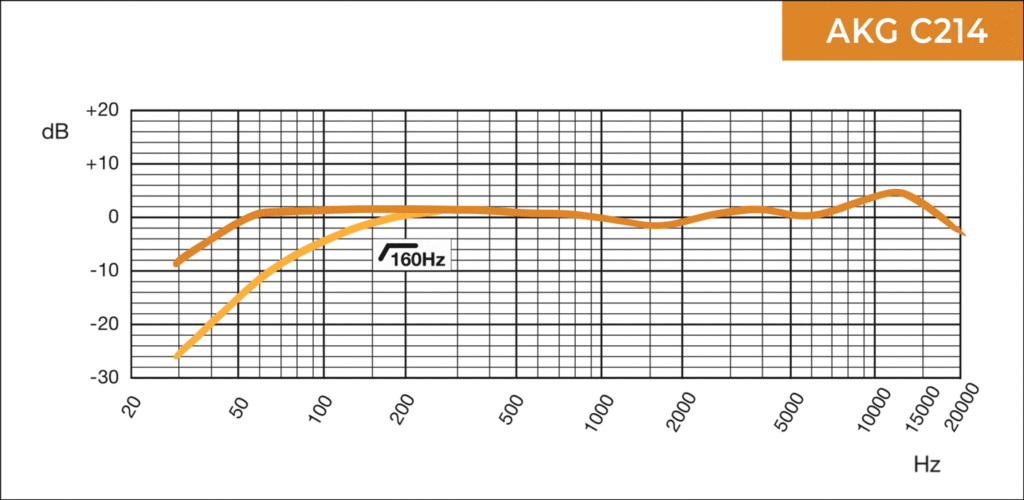
Between 700Hz and around 3.5kHz there’s a gentle dip of around 4db. And from 6kHz up to 13kHz there’s a large presence boost of another 3 or 4 db.
This gives the C214 a bright and sparkly sound, great for adding presence to warm, bassy or dull vocals. The EQ curves follows a classic ‘scooped’ pattern, which also works well for scooping out any ‘mud’ while recording a range of instruments.
Despite it’s pronounced presence peak, the AKG C214 does a good job of dealing with sibilance, and sounds bright without sounding brittle or harsh.
Verdict
The AKG is a truly capable vocal condenser mic, with a brighter sound than it’s big brother, the C414. It also offers a lot of versatility in the studio, as it can be used with a wide range of instruments.
The attenuation pad makes recording loud drums and horns just as easy as intimate vocals or acoustic guitars. With extremely high build quality and an affordable price, the AKG C214 is a great choice for anyone looking for an all round quality mic for the home recording studio.
Read the full AKG C214 review here
5. Audio Technica AT2020

A budget microphone that exceeds expectations
At a glance:
| Type of mic | Studio vocal condensor mic |
| Frequency range | 20Hz to 20kHz |
| Polar pattern | Cardioid |
The pros:
Very affordable
Sturdy and durable
Very good sound for the price point
The cons:
Sensitive to plosives
Not the best noise isolation
High self noise
No shock mount
What is it?
The Audio Technica AT2020 is a cardioid condenser aimed at musicians and vocalists on a budget. It was launched in 2004, and designed specifically for the home recording studio. The AT2020 offers a wide frequency range and a level of clarity and detail well exceeding expectations.
Features
The Audio Technica AT2020 is a stripped back mic, offering just the essential features needed for recording quality vocals. It has a cardioid polar pattern, with very good noise rejection from the rear of the microphone.
I found the AT2020 less effective at noise rejection on either side of the mic, noticing that it picked up a little extra noise from the room than we were expecting. A lack of internal suspension mount also means it is also a little sensitive to stand or handling noise.
Another thing to note is that the Audio Technica AT2020 only ships with a general mic stand clip, so an external shock mount would need to be purchased separately. I do recommend buying one though, as they’re reasonably inexpensive and will make quite a difference to how much noise is picked up.
When compared to other mics in this vocal roundup, the AT2020 has a comparatively loud self noise of 20dBA. For close vocal recordings this shouldn’t pose any problem, but makes it less suitable for more ambient room recordings.
In short, don’t use the AT2020 as a drum overhead or for miking up a whole ensemble, but do use it for close-miking vocals or guitars. It also has a respectable Max SPL of 144db, enabling it to handle drums, horns and the loudest singers.
Audio Technica AT2020 Frequency response
The AT2020 has a wide frequency range of 20hz to 20kHz, which is impressive for a budget microphone. It also has a very flat midrange between about 200hz to 5kHz.
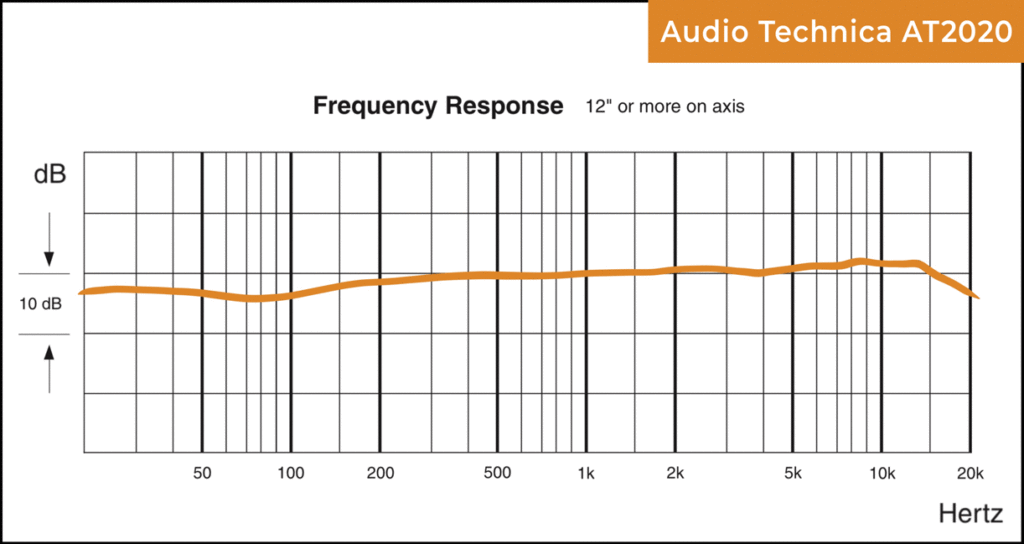
Bear in mind that the Audio Technica AT2020 doesn’t have a low cut filter switch, so it is quite sensitive to the proximity effect. If you’re considering an AT2020, it’s a good opportunity to brush up on your microphone technique, so you can draw the mic towards and away from you to control the level of bass.
In the high range there’s a small presence boost from 5 – 15kHz, which gives the AT2020 a nice sparkle in the top-end. Although the high frequencies aren’t quite as smooth as some more expensive studio condensers, the AT2020 is bright mic without being too harsh.
Overall the Audio Technica AT2020 microphone has a sound which is well suited to both vocals and spoken word. We found it to be quite flattering on a range of voices. It also sounds good on acoustic guitar, as long as you spend a little time working out where to place the mic.
Verdict
The Audio Technica AT2020 is a budget microphone that performs extremely well given its low price. It isn’t perfect, so stretching to a Rode NT1-A or Aston Origin might be good idea of you can afford it.
However, the AT2020 has a clear and professional sound which will be more than adequate for anyone taking their first steps into setting up a home studio.
Read the full AT2020 review here
6. Aston Microphones Origin

An innovative British microphone with tonnes of style
At a glance:
| Type of mic | Studio condensor microphone |
| Frequency range | 20hz – 20kHz |
| Polar pattern | Cardioid |
The pros:
Good internal noise rejection
Smooth detailed sound
Affordable
Great build quality
The cons:
A little on the bright side
Low Cut filter is slightly aggressive
What is it?
The British manufacturer Aston is a relative newcomer on the microphone scene, and the Origin vocal mic is a strong proposition. It’s a competitively priced studio cardioid condenser that has a bright and detailed sound with a lovely distinctive design.
Features
The Aton Origin has a fixed cardioid polar pattern, and is also equipped with a
- -10 dB pad
- 80 Hz low-cut filter
The distinctive cylindrical design also serves a functional purpose: the ‘wave-form spring head’ protects the microphone capsule, and can easily be reshaped if you knock or drop the mic.
The Aston Origin can be mounted directly on a stand, as it has its own internal shock mount system. Using it like this is surprisingly effective, particularly with the low cut engaged.
You can also can also purchase the Aston Origin with an external shock mount for that extra level of noise isolation. This could be useful if you intend to use the mic for more bass-heavy instruments as well as your vocals.
The Origin has a max SPL of 127db and a self-noise of 18dBA, which is a little on the loud-side, but not enough to cause too many issues. It also has a built-in wire mesh filter which does a good job of reducing plosives. But for a completely plosive-free vocal recording, you can use the included external pop-filter.
Aston Microphones Origin Frequency range
The Aston Origin has a wide frequency range of 20Hz – 20kHz. The frequency chart is extremely flat below 1kHz, which makes for an extremely reliable, even vocal tone in the mids and low-mids. A gentle roll-off below 100hz produces a smooth bass response.
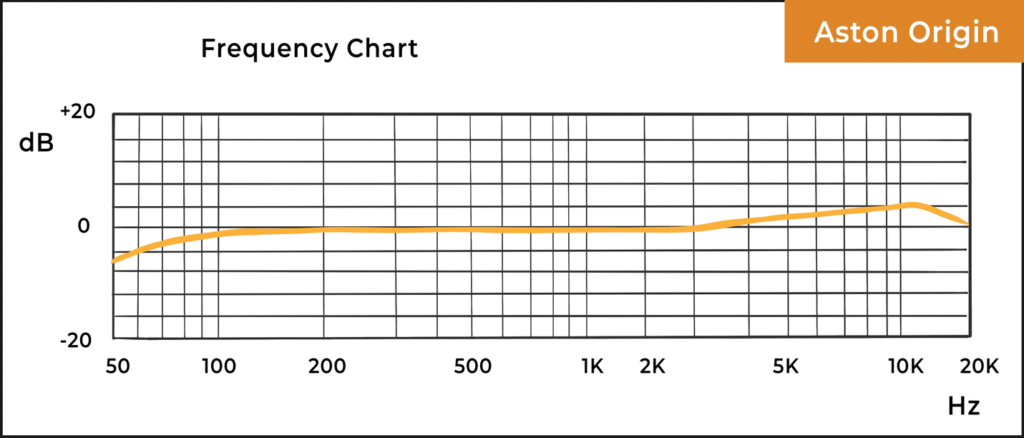
During testing I found the 80 Hz low cut filter to be on the steep side, and would have preferred a more gentle curve to the filter. But it wasn’t a big issue, as you can easily record your vocals in neutral mode and add your own filter or EQ in post-production.
Above 2kHz, the response gently climbs a few db up to around 10kHz. This gives the Aston its characteristically bright sound and provides a great deal of clarity and detail in the higher range.
Some may find this boost a little too bright, but for my taste the high frequencies sound really smooth and natural on vocals. If there’s too much high end for you, it can always be adjusted in post production .
Overall the Aston Origin has a really clear and flattering response which will suit a variety of vocals, both male and female.
Verdict
Alongside it’s stylish exterior, the Aston Origin has many strengths which are more than skin-deep. It has a smooth, rich and detailed sound which rivals some of the other more expensive microphones. It’s particularly suited to a range of vocals, as well as acoustic guitars.
Retailing at slightly cheaper than other midrange studio condensers, the Aston Origin is a great choice for anyone who needs great style along with sound quality.
Read the full Aston Origins review here
7. Shure SM58

A well-loved vocal microphone equally suited to both stage and studio.
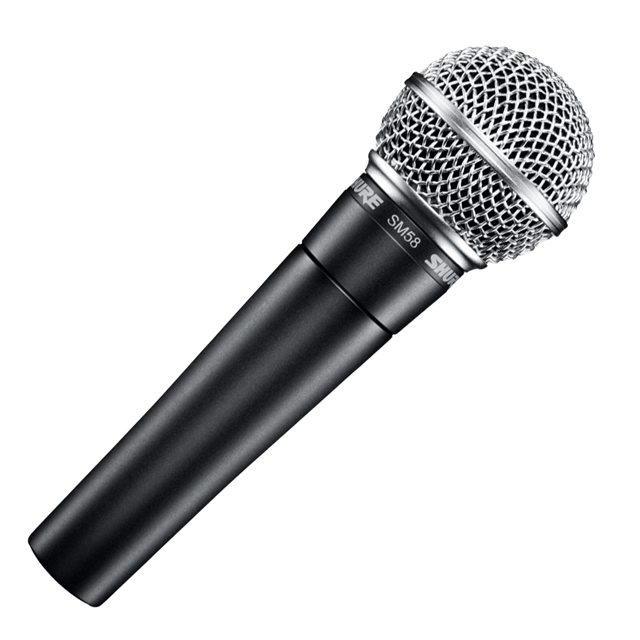
At a glance:
| Type of mic | Dynamic vocal mic |
| Frequency range | 50Hz to 15kHz |
| Polar pattern | Cardioid |
The pros:
Warm, clear sound
Rugged and reliable
Incredible reputation
Affordable
The cons:
Limited high-frequency range
What is it?
Launched in 1966, the Shure SM58 is probably the most popular vocal microphone of all time. Originally designed for use in a live setting, it combines tank-like durability with great noise rejection and a warm sound. It’s also highly regarded for recording vocals in the studio because of its distinct sound.
Features
The Shure SM58 is a solidly built, dynamic vocal microphone with a cardioid pick-up pattern. Dynamic microphones are less sensitive than condenser microphones, so the SM58 will pick up less room noise, than other condenser vocal mics.
Lower sensitivity also means less stand or handling noise, meaning you can hold the SM58 in your hand while recording if you need to. The Shure SM58 also has a built-in pneumatic shock-mount and foam pop-filter, developed for live use. Though for the cleanest recording sound it’s advisable to mount it on a stand with an external pop filter.
Another great asset of the SM58 is the high SPL – a staggering 160-180 db. This means you can scream into the mic with no problem, and record very loud instruments in the studio without and clipping.
So what are the benefits of using a Shure SM58 to record vocals in the studio? You’ll get the classic SM58 sound, which has been used on countless classic recordings throughout musical history.
But there’s also another great benefit. The SM58 is a dynamic microphone, with a cardioid polar pattern. This means it will pick up far less of a poor sounding room, or any street sounds, or distant traffic rumble.
It also doubles as an instrument mic, ideal choice for loud instruments such as drums or brass.
Shure SM58 Frequency range
The Shure SM58 has a frequency range of 50hz to 15kHz. This isn’t as wide as the other microphones on this roundup, particularly in the higher frequencies.
The SM58 doesn’t have the bright sparkling quality of more expensive condenser mics. It instead focuses on a smooth and reliable low and midrange, whilst preserving a warm presence and intelligibility towards the top.
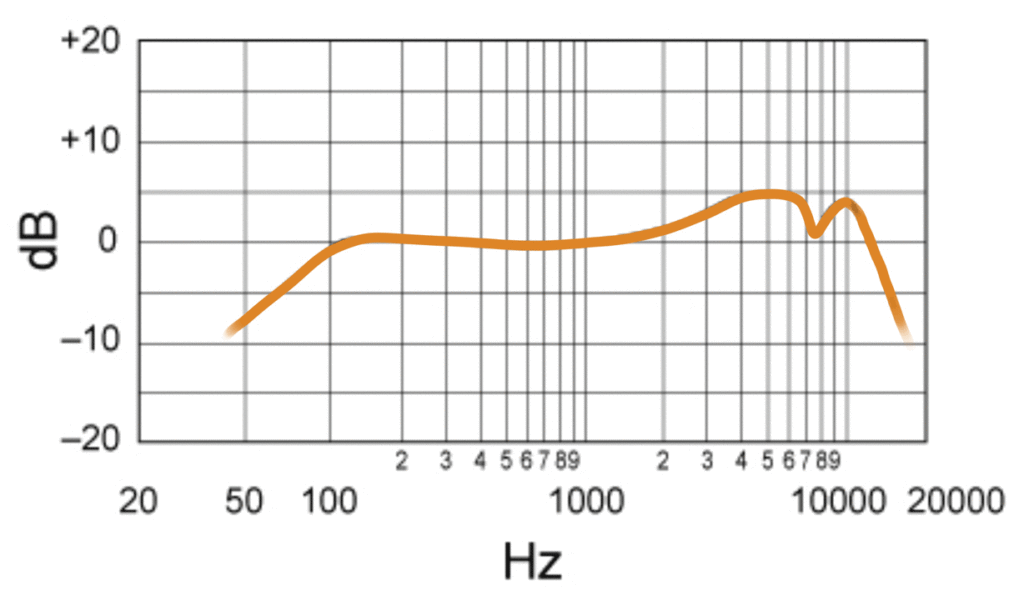
There’s a slight boost in the middle range, from 1 to 3kHz. It’s what gives the SM58 a full sound, and makes it a ‘warm’ sounding mic.
Further up the frequency chart, a boost of 5dB at 4-6 kHz, provides presence, adding to the clarity and definition in the sound.
At the top end of the frequency chart, we see a 4dB boost at 10kHz. The boost here provides some airiness and a subtle sparkle.
Overall the Shure SM58 has an even, warm sound, which is quite different to the bright sounding vocal mics or the more expensive studio condensers in this roundup.
This is very useful for adding darkness and grit to overly bright vocals, or taming shrill sounding instruments. I sometimes like to use the Shure SM58 in combination with other brighter microphones to create a fuller, warmer timbre.
Verdict
The Shure SM58 is a classic vocal microphone which has become an industry standard for live performance. But it makes sense as a recording vocal mic for you studio if:
- You need the classic SM58 sound
- Your room acoustics are compromised
- There’s extraneous sounds from outside the room
- You also need to record loud instruments
- You’re on a budget
- You want to perform live with the same mic
It’s build quality, reliability, great noise rejection, and unique sound make the Shure SM58 a great addition to the home recording studio.
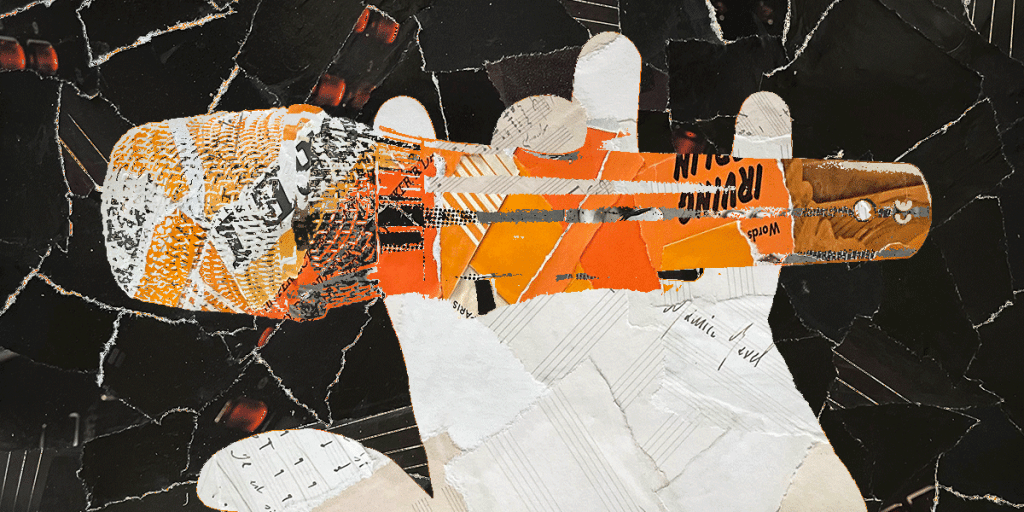
Best mic for recording vocals – Buyers Guide
In this vocal mic roundup I’ve explored the pros and cons of what I consider the best mics for recording vocals in the studio. But there’s other things to consider too when deciding which mic is the best fit for you.
Dynamic vs Condenser Vocal Mics
These two different types of microphones each have a unique internal circuitry, and offer their own strengths and weaknesses.
Condenser microphones tend to dominate the recording studio market due to their heightened sensitivity and ability to pick up fine detail.
The delicate mechanism inside a condenser is more sensitive to quiet sounds, high frequencies and fine detail. In the right setting, this is perfect for capturing the subtle nuances of even the most intimate vocal performance.
Most recording studios are controlled spaces with a fair degree of sound isolation. This creates a quiet, non-reverberant recording environment – perfect for the condenser microphone.
However the drawback to this sensitivity is that condenser mics are sensitive to background noise, and prone to feedback. That’s why dynamic microphones are generally preferred for live use.
But if you don’t have an acoustically treated, quiet recording environment, a dynamic vocal mic can be quite an asset. It picks up only what’s in front of it, leaving out the sounds of the room or the distant rumble of traffic.
That’s why the Shure SM7B, a dynamic microphone, has become such a favourite for vocalists, podcasters and streamers.
Something else to bear in mind is that a condenser microphones need phantom power, whereas the simpler dynamic mic, doesn’t require any power or batteries.
Recording Vocal Mics – Polar patterns
All microphones vary in their directionality. At one end of the spectrum, omnidirectional microphones are pick up sound from 360 degrees around the head of the microphone. At the other end, some microphones are extremely directional, only picking up what is directly in front of them (super cardioid or hyper cardioid).
Most vocal microphones have a cardioid polar pattern. These microphones are most sensitive “on axis”, directly in front of the mic. they also only pick up a little sound from the sides, and reject anything from behind the mic.
This is particularly good for vocals as it strikes a happy medium between rejecting room noise and being forgiving of some side-to-side movement from the singer. For more ambient room recordings you might want a wider polar pattern, as they tend to have a more natural sound for vocals.
If you need a microphone which can adapt to a variety of situations then a model with switchable polar patterns (such as the AKG C414 XLII) would be a good investment for years to come.
Vocal microphones – flat sound or coloured sound?
Every microphone is unique, and will have its own particular sound characteristics. Microphones that offer a neutral sound (where there are few peaks or troughs in the frequency response) are considered “flat”. Other mics have more variation across the frequency spectrum and are described as having greater “colouration”.
The right vocal microphone for you will depend on the characteristics of your voice, and your recording preferences. You might prefer to have the flattest possible microphone in all circumstances. That way you can add your own signature to the sound through the use of EQ in post-production.
But there’s also the possibility of finding a vocal mic with more coloration, which suits the unique characteristics of your voice. A deep sounding voice might benefit from a bright sounding mic like the AKG C214. Or a thin sounding high voice might need a warmer mic like the Shure SM58 to even out the frequency response.
Hopefully this roundup has provided some insight into which microphone might be the best choice for recording vocals in your home studio.
Budgeting for a vocal recording microphone
Another all important factor is how much money you have to invest. A great vocal microphone is built to last, so splashing out a little on the right choice can certainly be worthwhile.
If you have a bigger budget, and you need to record different vocalists, it’s worth buying a few different microphones. You’ll have all eventualities covered, with a mic to suit every voice. It’s also worth spending a little more on a mic as versatile as the AKG C414 XLII, which allows you to tailor the polar patter to every situation.
If you’re just taking your first steps in the world of home recording, the Audio Technica AT2020 offers terrific value, with great sound at a low price point. However if you’re after a great-sounding, versatile microphone at a midrange price, you can’t beat our top choice, the Rode NT1-A.
Conclusion
There’s an array of vocal mics out there, each with their own unique characteristics. To recap – to find the best mic for recording vocals, you’ll need to consider the following point:
- Dynamic vs condenser
- Bright vs warm charateristics
- Polar pattern choices
- Whether you need to also record instruments
- The unique characteristics of your voice
- The sound of your room
I hope this roundup article has helped you get closer to finding your ideal vocal recording mic.
If you want a deep dive into the different types of microphones, how they work and which one you should be using for your best sound, take a look at this guide.
Or if you’re considering setting up a home recording studio, you’ll find all you need to know here.
